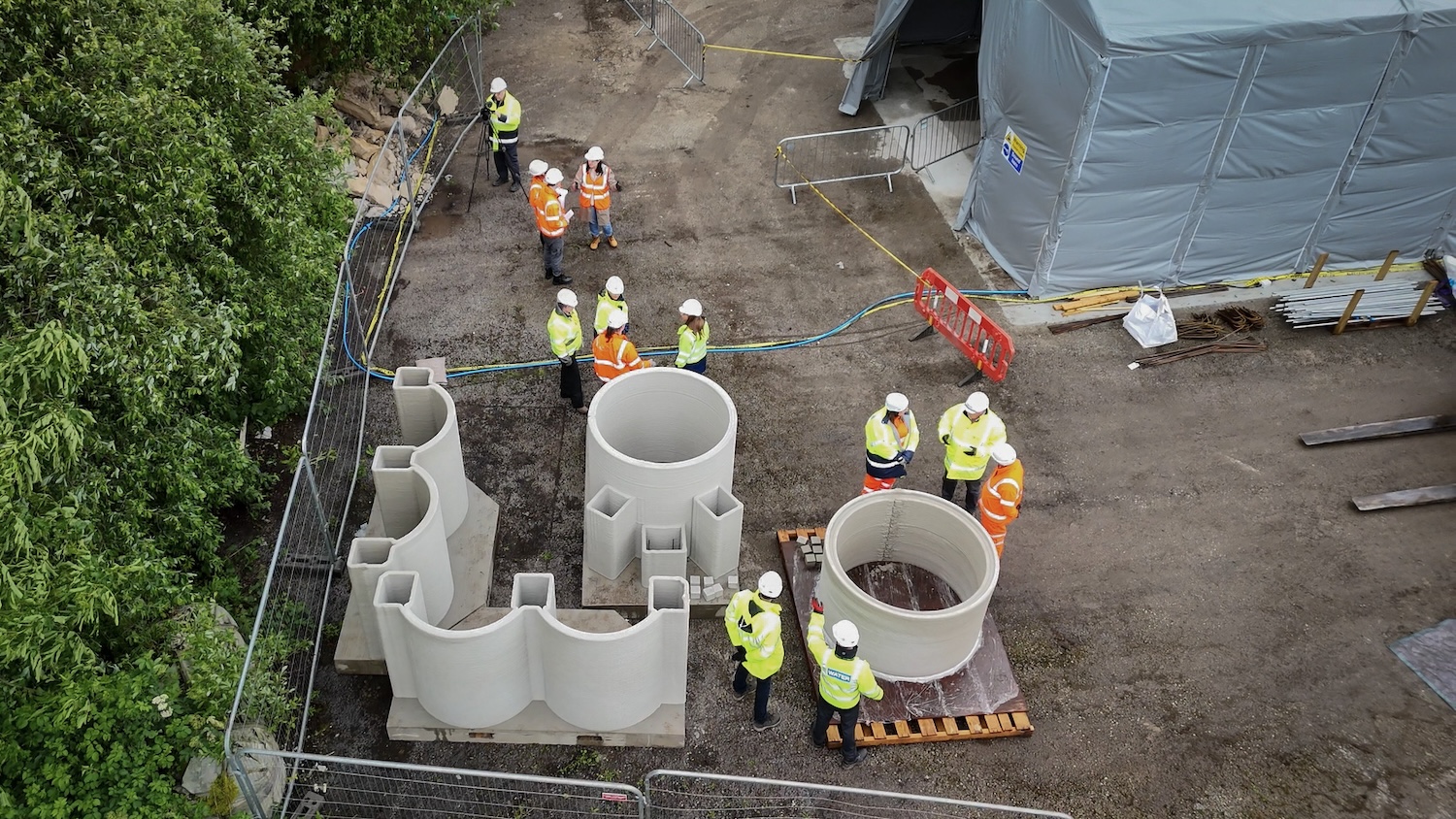
United Utilities (UU) is showcasing the success it has had with 3D printing in the water sector. It believes its trials can be successfully scaled up.
UU is leading the Water Industry Printfrastructure project, which is funded by Ofwat’s Water Breakthrough Challenge. UU’s partners include ChangeMaker3D, Manchester Metropolitan University’s PrintCity, and Scottish Water.
The project team has explored both concrete and polymer 3D printing in a series of studies, achieving what are said to be several UK water industry firsts. They include a project headed by PrintCity, a 3D manufacturing facility based within Manchester Metropolitan University, to create replacement parts through 3D scanning, CAD and 3D polymer printing.
Three printed items – a wastewater jet nozzle, CCTV skid plate and trough for water monitoring instruments – are being used by UU in everyday operations, following testing and trials. Laboratory equipment has also been printed and is being used by both Scottish Water and UU.
The ability to print replacement parts on demand can address challenges around equipment availability, delivery times and rising costs, helping to reduce reliance on suppliers and build in-house resilience. Faster project turnaround time, reduced cost and lower environmental impact are also key benefits.
The project team claimed another industry first with the opening of a temporary 3D concrete printing hub at UU’s Wigan Wastewater Treatment Works in June. The facility (pictured above) was created with technology from ChangeMaker3D.
The hub printed a range of concrete infrastructure, including combined sewer overflow chambers and Industrial Emissions Directive containment walls. Printed assets will be used on UU and Scottish Water sites in future. The facility was also used as a demonstration facility to showcase the technology to the water and construction sectors, along with other industries.
Opportunity to scale up
Lisa Mansell, chief engineer, innovation and carbon, at UU, said: “The Water Industry Printfrastructure project is transforming 3D construction printing from an innovation into an accessible tool to support everyday operations, drive efficiencies and help meet environmental goals.
“We are seeing tangible results from the printing processes developed by the project team, which have potential for adoption at scale. The technology presents many more exciting opportunities for the sector, and we look forward to showing just what is possible.”
Ian Watt, capital investment net-zero manager at Scottish Water, added: “The water industry is planning to spend a record amount on infrastructure during the next asset management period, with an ambitious capital programme that can only be delivered through new approaches and innovation.
“The Printfrastructure project has shown that 3D construction printing can deliver a 25% reduction in carbon, 20% cost saving and 55% reduction in labour, versus traditional methods. Assets can be built quickly, with a reduction in materials, creating a safer, more efficient working environment and helping to meet carbon goals.”
You can find out more about UU’s 3D printing in trials on a forthcoming webinar.
Don’t miss out on BIM and digital construction news: sign up to receive the BIMplus newsletter.












